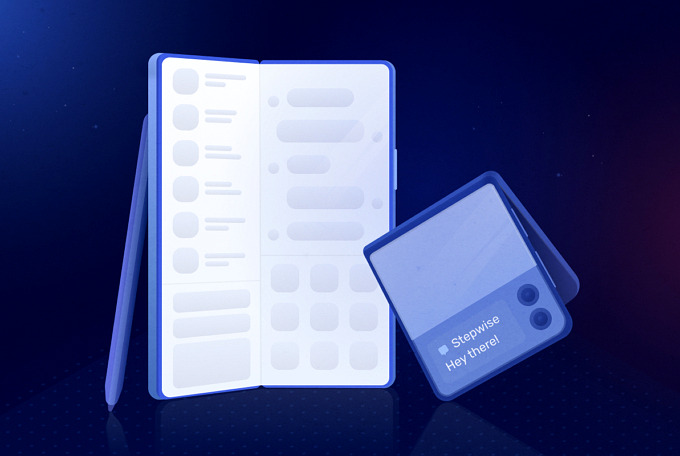In the past, when developing software, the perception of the target user and the success of a digital product were questionable until it was launched. Today, the very basics of UX are enough to pre-test the potential of your product. Find out what guerrilla testing is and why you should use this solution for software usability testing.
Want to increase your chances of success with your digital product? Take care of the appropriate user experience (UX). UX designing is about increasing the satisfaction of people who use your product. By regularly analyzing their needs, you can improve the functionality of the system, create more intuitive and easier to use interfaces, improve aesthetics and create valuable, tailored content. Thanks to this, it is easier to maintain the high quality of the application and create a final product that will appeal to potential customers.
The only way to properly build the user experience of your application is through testing. It is important to consistently carry them out at various stages of the project implementation. Currently, there are really many solutions and tools that allow you to check what your potential customers really need. One of the simpler and extremely effective methods is guerrilla testing. What is guerrilla testing and how to conduct such research?
What is guerrilla testing?
Guerrilla testing is a kind of informal, freely conducted interview with users. In many other tests (such as remote tests), users test the application under artificial “laboratory” conditions. Guerrilla usability tests allow you to examine the opinion of users in natural conditions. The everyday environment when conducting these tests makes the information obtained much more reliable.
Guerrilla testing is about asking random people to test our product. It is best to look for potential testers in cafes, restaurants, offices or on the street. You can also ask colleagues or family members to help in these tests. You run an application or website on your computer or phone, have someone else check it, conduct an interview, listen to opinions and save key information.
This method is great for projects with limited or no testing budget. Guerrilla research is a perfect fit for agile software development methodologies. In such projects, short iterations are used, and guerrilla software tests allow, at a low cost, to constantly check the quality of UX.
How to conduct guerrilla usability tests?
As we already mentioned, guerrilla usability tests are carried out in a natural environment, asking random people anywhere to test our product (ready-made application, website or MVP) and give feedback on how it works.
Guerilla testing is about testing applications, not users, so you should create an atmosphere of interviews that will make testers feel at ease and give you an honest answer, in line with their own feelings.
Many people will help you for free, but it’s a nice gesture to offer a gadget, cookie or coffee in return. Simple 10-minute interviews will allow you to gather enough information, and a reward in the form of a trifle is a sufficient form of compensation for your time. Even 1 hour is enough to get a huge amount of feedback.
According to Jakob Nielsen, a pioneer of UX testing, as many as 5 test users can provide you with information on 85% of key system usability issues. This information is much easier to obtain from people who have not used your application yet. The product owner or the team that creates the software knows the application too well to look at its operation objectively, which is why guerrilla testing is ideally suited to supplement such information in an IT project.
According to the creator of the “5 user” rule, we learn the most from the first tester, slightly less from the second, even less from the third, and so on. Tests of more users than the title five may therefore turn out to be a waste of time. Most of the information will be repeated and the value of the time invested will exceed the value of the new data.
Accurate research notes can be used to improve the most important UX elements of the application. During the interview, particular attention should be paid to the information that the test taker gives on their own when using particular functions, without prompting by a specialist.
Pros and cons of guerrilla testing
Like any method of software usability testing, guerrilla testing has its advantages and disadvantages, which are worth paying special attention to in the summary.
Benefits of guerrilla testing:
- Speed – it does not require complicated preparation. Time is also saved by the form of interviews, which can be conducted even in 1 hour!
- Saving money – no great organizational costs. There is no need to pay test users (unless you want to repay a little bit).
- Objective opinions – the objective and fresh approach of people who have not yet used the application allows them to look at the operation of the system from a distance.
- Credibility – the context of conducting guerrilla usability tests allows the software to be tested in real conditions of use of the product.
Disadvantages of guerrilla testing:
- Mismatched sample – there is a risk that the random people selected for the tests will not necessarily belong to the target group of the product. Some of the data may be inadequate and misleading.
- Poor quality of feedback – the assessment of people testing our software may depend on humor and well-being, which are typically human factors. Testers may also be distracted by other activities.
UX tests provide a lot of information that is crucial for the success of our product. It is worth conducting them at many stages of the project and improving the software created on a regular basis. Thanks to research, such as guerrilla testing, we get information about who the recipient of the product is and what their needs are, how they use the product and what feelings they have. We can more easily identify the problems they are facing, what is upsetting and what is worth improving. Guerrilla usability tests of the software help to answer the question of what functions are missing in the product and what functionalities will increase end-user satisfaction.




